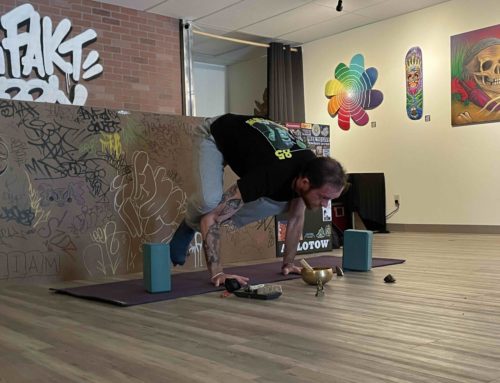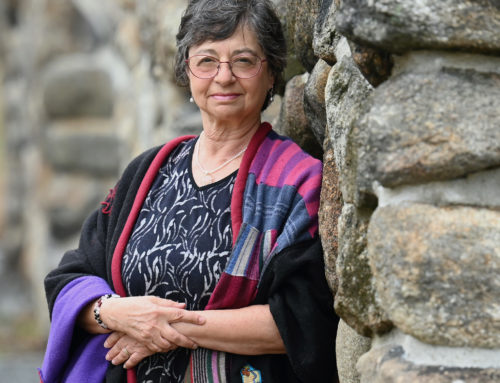Junior at Clark University, Apple Gould-Shultz, said one of the main reasons she decided to apply and then come to the school was for its Human-Environment Regional Observatory (HERO) research program.
“I heard about it from a Clark newsletter, and they were doing tree surveys. I saw that, and I said I really wanted to be a part of that,” Gould-Shultz said. “I am really interested in human interactions with cultivated environments, like agriculture.
HERO allows undergraduate students, graduate students, and faculty to engage in research on human-environment relationships throughout Massachusetts.
“I knew that HERO was something I wanted to go to Clark for,” Gould-Shultz said. “I was going to keep applying until they let me in.”
Now, Gould-Shultz and four other students–Sarah Hughes, Madeline Regenye, David Henriques, and Caleigh McLaren–are able to participate in human-environment research projects in the hopes of assessing the effects of urban heating.
The program is currently collaborating with the Massachusetts Department of Conservation and Recreation’s Greening the Gateway Cities Program. This involves the inventory of juvenile trees along public roads and at private residences, as well as the survey of residents and other stakeholders.
“To not only collect data but then analyze it and work with it has been very rewarding,” Gould-Shultz said.
Most of the summer, the students went to Green Island, the area near Kelly Square in Worcester. They used instruments to measure temperature, humidity, and ozone. At locations that had trees, they would measure diameter as well as species. On each block, the students would take measurements while they walked around the city.
“I was really interested in the interaction with the environment, specifically trees and green infrastructure, and human welfare, like social needs,” said Hughes, a junior. “I thought this could be a really great way to look into that and actually make a meaningful contribution.”
Over the two weeks that the team spent at Green Island, they ended up with 539 sites that they surveyed and took a full census of, according to Gould-Shultz. They compared that to surveys they did in Columbus Park for a week.
“We found some interesting things, especially with the differences in the species,” Gould-Shultz said. “Green Island had a lot more species where Columbus Park was mostly maples.”
Henriques also added that the team went to the Map Library at Clark University and were able to find old maps of Worcester to inform their flooding research.
To date, the HERO researchers have surveyed Worcester, Chelsea, Holyoke, Fall River, Pittsfield, Chicopee, and Leominster.
For people like senior Regenye, who comes from Poconos, Pennsylvania, the research in urban forestry gives her a different perspective from what she grew up with.
“I really wanted to understand how the environment played into the decisions and policies that are made and affect groups that are greatly impacted,” Regenye said. “Using data in GIS is one thing, but collecting data and analyzing it yourself is another. It was really exciting.”
The team of students is now working with the City of Worcester to the Office of Conservation Planning. A lot of their experimental designs were based on areas and problems that were already recognized.
“We reported back to them as we were conducting our research, and we had a big final presentation,” said Gould-Shultz.
Regenye added that the group was still working with the Office and clarifying their questions for further research. The City of Worcester has a Green Plan that is yet to be passed, but the student’s research can help the Commissioners decide what needs immediate action and what can be done specifically. The team’s research pointed out both long term and short term solutions.
“We want our research to be accessible and working with the City is the best way to do that,” Hughes said. “What we find and the problems that we see that need to be addressed can actually be addressed.”
“Obviously Worcester has developed a lot from a very small town, mainly surrounded with rural towns and agriculture to the city it is today,” Hughes said. “I’d never say that’s a bad thing, but there are ways in which urban development is always harmful. In general, I’d say it’s harmful to the environment. We just want to look at ways in which we can continue urban development in green ways.”
Regenye said that these areas though are becoming increasingly unlivable. This is readily seen with the three different heat waves and record-breaking amounts of rain the city faced this summer alone.
“I think Worcester is trying to help and so a lot of our considerations and recommendations we made for them were just improving green infrastructure,” Regenye said.
Some suggestions made so far include biosoil. Regenye said that the group is looking to add the environmentally friendly soil to the Arboretum.
“That’s not just to say it’s a Worcester only problem,” Hughes said. “Anything that we’ve done can be taken and applied to any town or city in the US.. With a few fixes with looking at life history, water bodies, and poverty, you can kind of take what we’ve done and start looking for solutions in other areas.”
HERO Fellows are awarded a stipend for the eight weeks during the summer that they committed to full-time research projects. Throughout the school year, they receive academic credit, and the students said that they are all continuing research projects, most of them being either thesis or capstone requirements.
“We’re taking not just the data that we’ve taken but also the conclusions that we’ve drawn from our summer work and applying that to a year-long research project,” Gould-Shultz said. “Each of us is doing an independent research project working off of what we already started doing…The people most affected by climate change are the people that don’t necessarily have access to reverse those changes or mitigate them.”
Henriques said that he is thinking about working closely with HERO Phd student, Marc Healy, to look at old area imagery and tree cover over time and the effects of it.
“In our research we found that there was a staggering amount of wetlands that existed back in 1833 but now we’re down to a mere percentage of that,” Gould-Shultz said. “It’s important to us to give back to the City of Worcester. The fact that the City is taking it so seriously and working with us is a big step. It’s really a big sign of respect that they’re taking our research seriously and implementing these changes.”
The students said that they learned a lot from the research, and they mentioned that it was important to help out within the community in which they live and go to school.
“It’s about making this city more livable, giving back to the community, and really focusing on equity within Worcester,” Hughes said. “You could really see the contrast between the neighborhoods. It has these high temperatures, air quality, and a lot of impact on health and liveability…It’s just about improving that so people can have a better quality of life in Worcester.”







Leave A Comment